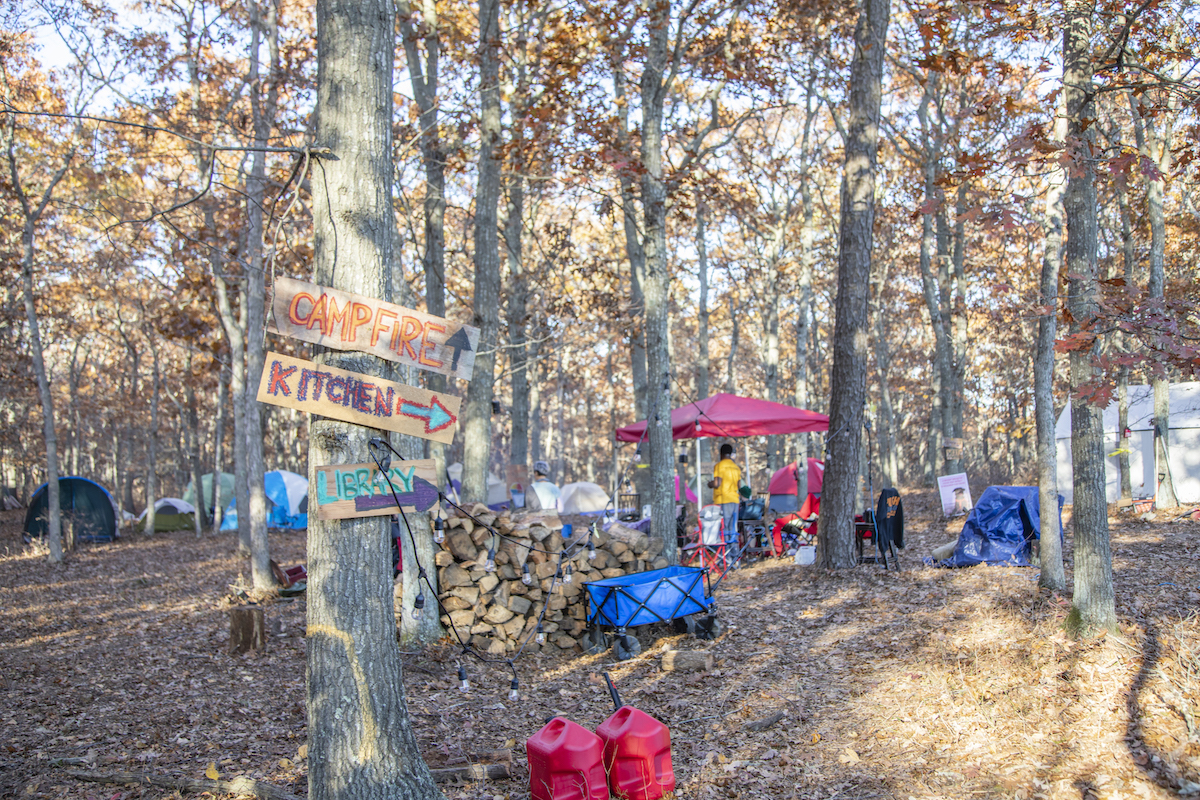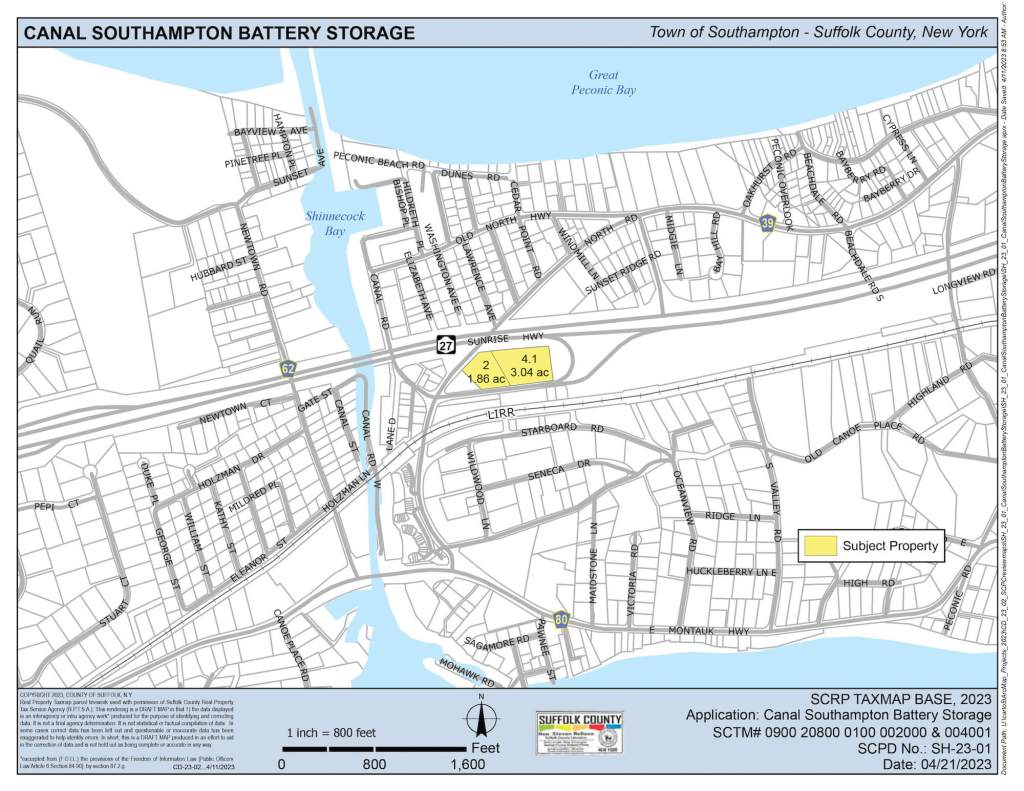A Sign of the Times: Protest Shines New Light on Shinnecock Nation's Past and Future

In 2019, the Shinnecock Monument billboard was erected on Sunrise Highway in Hampton Bays as a potential economic boon for the Indigenous nation. The billboard immediately sparked controversy with the Town of Southampton and New York State, with the latter filing a lawsuit halting construction of a planned second billboard on the opposite side of the highway. Now, as 2020 draws to a close and the second, unbuilt monument remains in contention, a group within the Shinnecock Nation called the Warriors of the Sunrise have embarked on a month-long protest, starting a Sovereignty Camp on the Westwoods land to demand New York State drop its lawsuit, among other goals.
“We’re growing every day,” says Warriors of the Sunrise member Tela Troge. “We’ve really built up camp infrastructure. We have sanitation, electricity, a core group of about 25 campers. We have a lot of supplies and food and are gaining a lot of support.” Troge notes that financial support has been strong, with a GoFundMe page set up, and someone even took out an ad on the monument sign. “It’s been pretty overwhelming. We had a small action a couple of nights ago when we did a rush hour protest on the highway that had a really good turnout.”
But so far, nobody representing New York State or the Town of Southampton has come to the Sovereignty Camp. “We haven’t heard from either. No one from the state or town has reached out to us regarding our demands,” says Troge, who says she is not surprised. “They’ve been ignoring-slash-oppressing us for the past 400 years so we’re not too terribly concerned, but we do expect to start discussions with them sooner rather than later. We’re quite serious about getting New York State to drop the lawsuit about the sign.”
One person Troge expects to reach out is Southampton Town Supervisor Jay Schneiderman, who says that the experience of governing a town that contains a sovereign nation is a challenge. “It is a unique situation to have a nation within a town,” says Schneiderman. “All of the members of the Shinnecock Nation are also residents within the town and voters within the town and my constituents. But they very much operate like a separate government, almost like a separate country. In Southampton, we’re really proud of the presence of an Indigenous Native American tribe. I think it adds a tremendous amount to the Southampton experience and culture. It’s part of our tapestry, certainly. It’s a deep part of our history.”
Schneiderman acknowledges that he can’t “undo the history, beginning with colonial times, in terms of how the Shinnecock were treated—their land stolen, disease brought here, lots of questionable treaties and land deals. I can’t undo that. But at least we can try to work together now and address the ongoing issues of poverty, malnutrition and economic development.”
Of course, COVID-19 has amplified all the challenges the Shinnecock face. “For a long time, we weren’t affected by the virus itself but we were hit almost immediately by the economic fallout,” says Troge. “We were already in kind of a bad place, but things just got that much worse when everything shut down. We started to face very real and very serious consequences of being food-insecure and having inadequate housing situations.”
Troge adds that a recent outbreak at Southampton College led to residents of the reservation contracting the virus, which made things even worse for the struggling community. Troge says that the ongoing lawsuit from New York State is making things even more difficult. “We’re in a situation where we have a New York State Supreme Court judge saying this is absolutely Shinnecock land and we have the right to conduct economic development on it but New York State is keeping this lawsuit against us. At the same time, we’re struggling to feed our people and get diapers for our babies, so New York is really misguided and clearly in the wrong with this lawsuit.”
Certainly, the second monument sign, with advertising opportunities, would help the Shinnecock Nation, as would a proposed rest stop, featuring a restaurant, stores and even a gas station. Schneiderman thinks this would be a good use of the land for both the Nation and the Town of Southampton. “I think it could be a tremendous economic generator for the Shinnecock,” he says. “At the same time, I think it could also provide lower-priced gas as well, so there is a benefit for everybody.”
Schneiderman adds that Southampton has not joined New York State’s lawsuit regarding the billboards. “We are not trying to block construction of the second billboard,” he notes, but does acknowledge that he believes the sign is “out of character for the area and I was hoping the Shinnecock would pursue different approaches in economic development but that is what they’ve chosen. We can respectfully disagree but we’re not suing them for doing it.” The Town Supervisor also supported the Graves Protection Act, which was passed to protect unmarked graves found during land construction.
But after centuries of conflict and challenges, and a people struggling with poverty in a town filled with wealth, the members of Shinnecock Nation want more to be done. While Troge hopes that with former Vice President Joe Biden projected to win the 2020 election, there will be more sensitivity to the needs of Indigenous people. “The Biden Administration is committed to Indian sovereignty, so I feel like it will be a guiding light,” she says. “How far it trickles down to the Town of Southampton and State of New York, I honestly don’t know, because they’ve been such an oppressive force for so long they can’t seem to shake it.
“That’s one of the reasons we want Jay Schneiderman and Gov. Andrew Cuomo to come to Sovereignty Camp. We feel that maybe they don’t know all the history and maybe they need us to educate them on the exact history of what’s happening here so that they can see that their actions are continuing this horrible history.”
The Sovereignty Camp is, according to Troge, a huge opportunity to teach people about the issues the Shinnecock face. “That’s what we’re trying to do—raise awareness and invite people to come down and become educated on these issues.”



